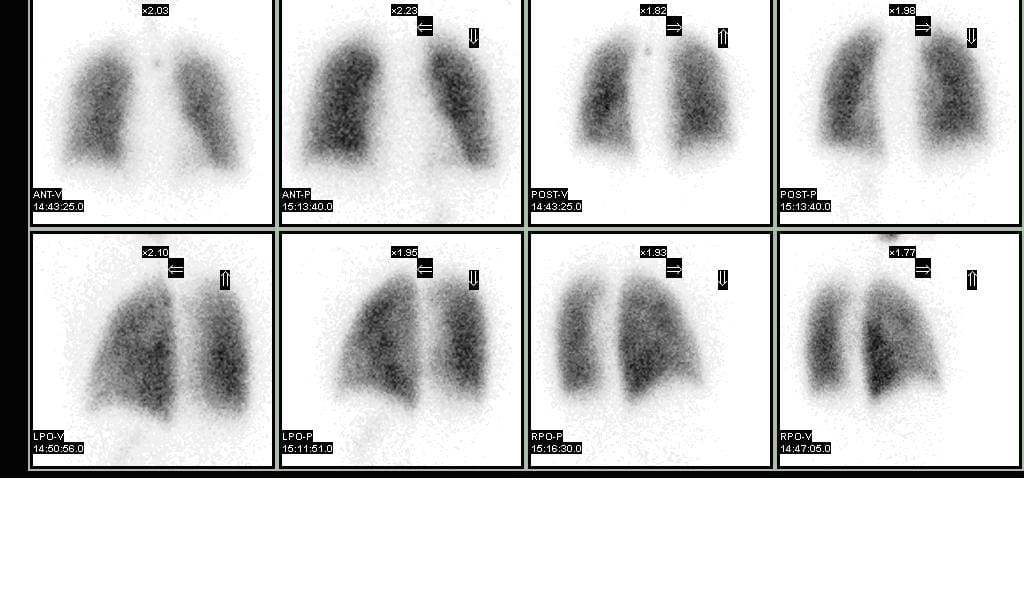Numerous scanning tools are available in the medical industry with technical evolution. VQ scan and CTA are diagnostic tools used extensively in nuclear medicine to scan organs.
Ventilation-perfusion scan (VQ) measures and identify blood circulation in the lungs. Computed Tomography Angiography (CTA) utilizes an X-ray machine for a high-quality image.
Key Takeaways
- VQ Scan (Ventilation-Perfusion Scan) evaluates lung function and blood flow.
- CTA (Computed Tomography Angiography) is a non-invasive imaging technique to visualize blood vessels.
- VQ Scan is more sensitive for detecting pulmonary embolism, while CTA offers better visualization of blood vessels.
VQ Scan vs CTA
The difference between a VQ scan and CTA is that a VQ scan is a medical technique that uses a tracer (a radioactive substance) to diagnose the body organs and majorly scan the lungs. The radiology department effectively uses it. On the contrary, Computer Tomography Angiography (CTA) is a diagnostic procedure that detects if there is any blood clot in the heart and lungs. It evaluates pulmonary embolism.

VQ scan is called Ventilation-perfusion scan because this diagnostic test is a two-step procedure used in scanning the lungs. The ventilation scan determines the air flow, while the perfusion scan measures the blood flow of the lungs.
The medical test technique is used to diagnose if there is any blood clot in the lungs.
Computed Tomography Angiography, also called CT angiography or CTA, is commonly used to diagnose pulmonary embolisms and present high-quality images using an X-Ray machine.
This test is utilized in such a way that it enables it to scan blood clots in the lungs and pulmonary arteries. It is considered the first imaging test to detect the possibility of acute pulmonary embolism.
Comparison Table
| Parameters of Comparison | VQ Scan | CTA |
|---|---|---|
| Stands for | VQ scan stands for Ventilation-perfusion scan. | CTA stands for Computed Tomography Angiography. |
| How it works | It diagnoses pulmonary embolism and produce images of tissues and vessels by combining with a CT scan. | VQ scan does not provide good-quality images of the diagnosed organ. |
| Image quality | The radiation exposure in VQ scans is comparatively less. | CTA provides high-quality images as compared to the VQ scan. |
| Radiation Exposure | CTA includes a relatively higher risk of radiation exposure than a VQ scan. | Compared to CTA, it has lesser accuracy in detecting and diagnose the lungs or pulmonary embolism. |
| Accuracy | Compared to CTA, it has lesser accuracy in detecting and diagnose lungs or pulmonary embolisms. | It has significantly high accuracy. |
What is VQ Scan?
A Ventilation-perfusion scan is a lung diagnostic test that is performed in two significant steps or scans. One measures the airflow, and the other measures the blood flow in the lungs.
The scanning includes a low-risk radioactive substance and provides images of the blood clot.
A Blood clot in the lung is known as a pulmonary embolus, and symptoms of this medical condition include breathing problems, rapid heart rate, and chest pain.
The VQ scan takes nearly 40 minutes, and low risk is associated because the amount of radiation is relatively less.
To measure the airflow, a small amount of radioactive tracer substance is provided to inhale through a nebulizer or mouthpiece. The person lies down, and images of the lungs are captured.
Another radiopharmaceutical substance is injected to diagnose the blood flow, and images are taken.

What is CTA?
Computed Tomography Angiography or CTA, is a diagnostic tool primarily used to diagnose blood clots, blood vessels, and pulmonary embolism-related diseases.
Doctors use X-ray machines, and CT scans for high-quality image of the tissues and blood vessels. There could be numerous reasons why the doctor recommends this test.
It is used to diagnose and identify abnormal blood vessels that may get damaged due to some injury or formed inside the brain. It also located tumours.
CTA tests are used by healthcare and doctors for cancer treatment and kidney transplants.
It is suggested that this test must be done after checking the medical condition and eligibility because it may cause some side effects, including damaging the kidney if the person has diabetes or have some kidney disease.
Main Differences Between VQ Scan and CTA
- VQ scan and CTA are the diagnostic tools used by the radiology department and medical centre. VQ scan is an older medical technique, a two-step process for a Ventilation-perfusion scan. On the contrary, the term CTA stands for Computed Tomography Angiography.
- VQ scan and CTA diagnose and detect the PE or pulmonary embolism but vary from each other in one way or another. VQ scan diagnoses and measures airflow and blood flow using the ventilation and perfusion scan tests, respectively. CTA, on the other side, diagnoses body organs and produces images of tissues and blood vessels by combining them with a CT scan.
- For every diagnostic tool, image quality plays a significant role in highlighting the major issues. The image quality of the VQ scan is not that good as compared to the CTA, as the CTA produces relatively high-quality images.
- The diagnosing or scanning test is propagated using some radioactive or radiopharmaceutical material that works as a tracer. The radiopharmaceutical used surely has some radiation exposure. The radiation exposure of VQ scan is relatively less than CTA.
- VQ scan and CTA have an accuracy level that provides relevant information to the doctors regarding the effective organ. If the accuracy is concerned, then for the pulmonary embolism, the images or test report of CTA is significantly more accurate than the VQ scan.



